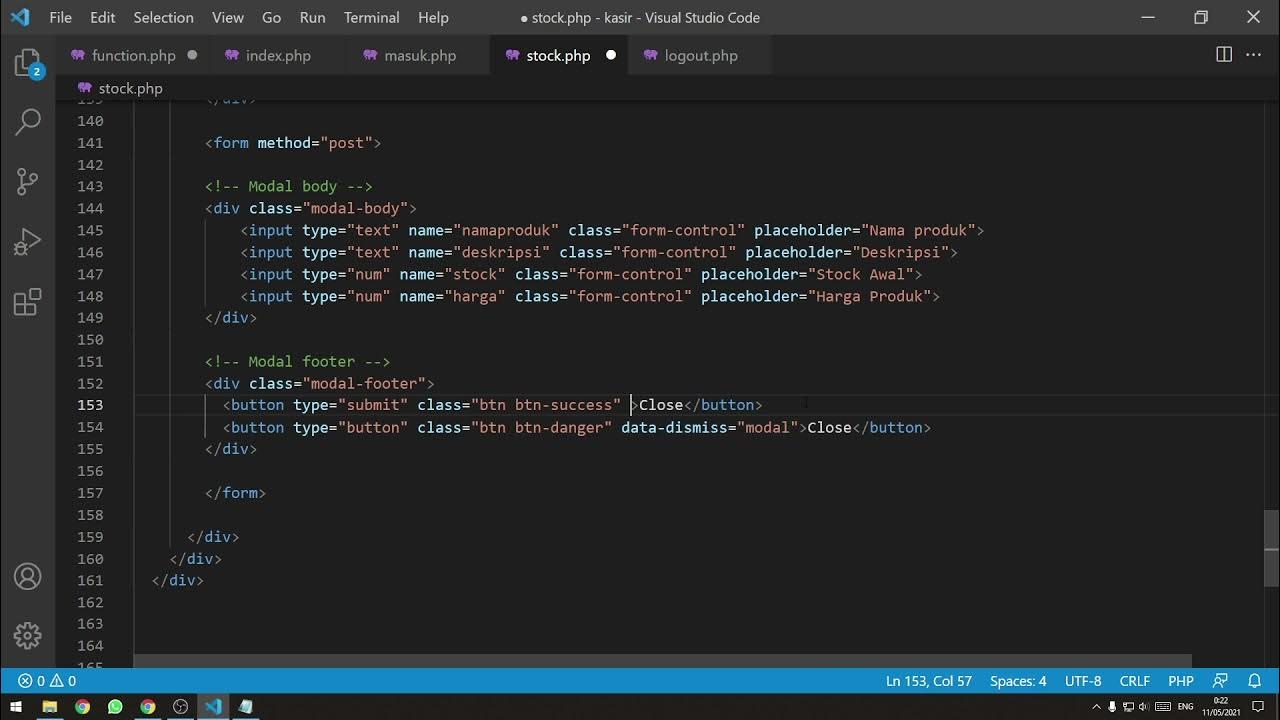Larvel 9: Buat REST Api CRUD dalam 8 menit
Summary
TLDRThis video walks through the process of building a Laravel 9 CRUD application for managing customer data. The speaker demonstrates how to create a Customer model, migration, and controller, set up database configurations, and implement the basic CRUD functionalities (Create, Read, Update, Delete). The tutorial includes testing the application using Postman, showing how to perform operations like creating, updating, retrieving, and deleting customer records via API requests. The video provides a clear step-by-step guide to building and testing a simple RESTful API in Laravel 9.
Takeaways
- 😀 Create a customer model, migration, and controller using `php artisan make:model Customer -m -c` in Laravel 9.
- 😀 Define the necessary fields for the customer model such as name, ID number, DOB, and email in the migration file.
- 😀 Set the `protected $guarded` property in the customer model to allow mass assignment of fields.
- 😀 Configure the database connection settings for PostgreSQL in the `.env` file, including host, port, database name, username, and password.
- 😀 Run migrations with `php artisan migrate` to create the required tables in the database.
- 😀 Modify the `CustomerController` to include methods for handling CRUD operations: index, show, store, update, and delete.
- 😀 Use pagination in the `index` method to return a list of customers, with the response in JSON format.
- 😀 The `store` method should handle the creation of a new customer by retrieving data from the request and saving it to the database.
- 😀 The `update` method should allow updating customer details and return the updated customer data in JSON format.
- 😀 The `destroy` method is used for deleting a customer record, with a success response in JSON format indicating that the customer was deleted.
- 😀 Test the API by sending POST, GET, PUT, and DELETE requests to the appropriate endpoints for creating, fetching, updating, and deleting customer data.
Q & A
What is the first command executed in the tutorial?
-The first command executed in the tutorial is `php artisan make:model Customer -m`, which creates a new `Customer` model along with a migration file.
What is the purpose of the `-m` flag in the `make:model` command?
-The `-m` flag is used to generate a migration file along with the model, allowing the developer to define the structure of the database table associated with the model.
Which fields are added to the `customers` table in the migration file?
-The fields added to the `customers` table are `name` (string), `id_number` (string), `dob` (date), and `email` (string).
How is pagination implemented when retrieving customers in the `index` method of the controller?
-Pagination is implemented using the `paginate(10)` method, which returns a paginated list of 10 customers at a time.
What HTTP method is used to create a new customer in the `store` method of the controller?
-The HTTP method used to create a new customer is `POST`, as it sends data to the server to create a new resource.
What is the purpose of the `findOrFail` method in the `show`, `update`, and `destroy` methods?
-The `findOrFail` method is used to retrieve a customer by its ID. If no customer is found, it automatically throws a `ModelNotFoundException`, ensuring proper error handling.
What route method is used to define the API endpoints for the `CustomerController`?
-The `Route::resource('customers', CustomerController::class);` method is used to automatically generate routes for all CRUD operations (index, store, show, update, destroy) for the `CustomerController`.
What response is returned after a customer is successfully deleted?
-After a customer is successfully deleted, a JSON response with a message `Customer deleted` and a `200` HTTP status code is returned.
How is the database connection configured in the tutorial?
-The database connection is configured in the `.env` file, where the tutorial specifies using PostgreSQL with the host `localhost`, port `5432`, database name `belajar_laravel`, username `sheren`, and password `seller`.
What is the format for testing the API using Postman or a browser?
-To test the API, the user can send a POST request to `http://localhost:8000/api/customers` with a JSON body to create a customer, and use GET, PUT/PATCH, and DELETE methods for other CRUD operations. The `id` of the customer is included in the URL for show, update, and delete requests.
Outlines

This section is available to paid users only. Please upgrade to access this part.
Upgrade NowMindmap

This section is available to paid users only. Please upgrade to access this part.
Upgrade NowKeywords

This section is available to paid users only. Please upgrade to access this part.
Upgrade NowHighlights

This section is available to paid users only. Please upgrade to access this part.
Upgrade NowTranscripts

This section is available to paid users only. Please upgrade to access this part.
Upgrade NowBrowse More Related Video

01 - Instalasi Laravel

Membuat CRUD Buku | Soal UKK RPL 2024 - Aplikasi Perpustakaan Digital (Part 5)

[Part 3] Tutorial Aplikasi Kasir / Penjualan Berbasis Web PHP Native - Insert Data + Looping

Belajar Laravel 11 | 7. Model

Laravel 11 Breeze Multi-Table Authentication tutorial

Soal Latihan UKK | 2. Instalasi dan Konfigurasi Laravel
5.0 / 5 (0 votes)